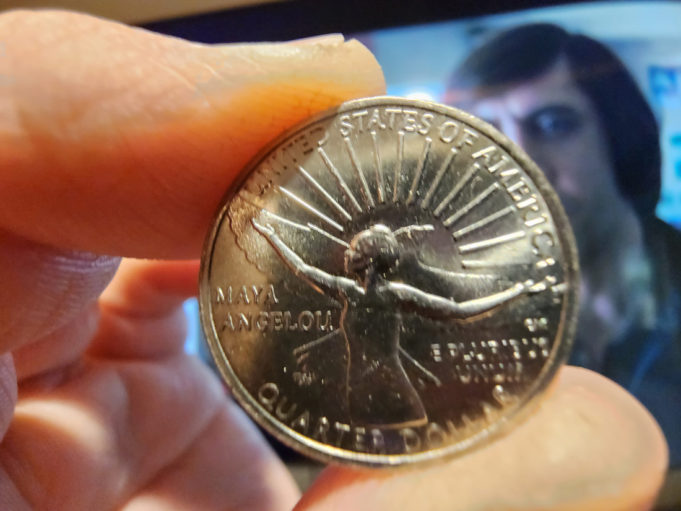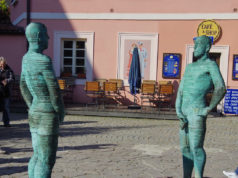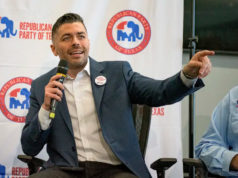Today, a mixed bag. Good news and bad news.
Remember the main coin flip scene in No Country for Old Men, which is set in Texas? It now resonates in a whole new way.
For the uninitiated, stoic assassin Anton Chigurh walks into a backcountry West Texas convenience store, and, after what he clearly perceives to be an absurd encounter with the rustic, elderly store proprietor, decides the universe might be better off without said proprietor. Chigurh is a nihilistic figure who claims no proprietary leanings in in terms of judging good or bad or right or wrong, necessarily — he just considers the elderly man’s tired, down-home witticism and sedimentary resignation an affront to the living. I guess it’s good he isn’t God.
Chigurh does, however, entertain sporting chances.
“What’s the most you ever lost on a coin toss?” he asks the man.
“I don’t know,” the proprietor says. “I couldn’t say.”
Chigurh flips a quarter, catches it, and places it on the wooden checkout counter surface, covering it with three fingers.
“Call it,” he says.
The proprietor eyes him unsurely. “Call it?”
“Yes.”
“For what?” the proprietor says.
“Just call it.”
There is a long pause, the elderly man’s mind slowly sifting through the possible implications of this strange wager. “Well, we need to know what we’re calling it for, here.”
Chigurh is mildly vexed. “You need to call it. I can’t call it for you. It wouldn’t be fair.”
The proprietor thinks for a moment. “I didn’t put nothing up.”
Chigurh face flashes almost reptilian. “Yes, you did. You’ve been putting it up your whole life. … You just didn’t know it.”
The elderly man flails, motionlessly and nonverbally.
“Do you know what date is on this coin?” Chigurh says.
“No.”
“Nineteen-fifty-eight. It’s been traveling for 22 years to get here. Now, it’s here, and it’s either heads or tails, and you have to say or call it.”
“Well, look, I need to know what I stand to win.”
“Everything,” Chigurh replies chillingly.
“How’s that?”
Chigurh is annoyed but never out of control.
“You stand to win everything,” he pronounces.
There is another pause.
“Alright,” the proprietor says. “Heads, then.”
Chigurh slowly reveals the coin under his fingers. It’s heads.
“Well done,” he says.
The attendant begins to scoop up the coin and put it in his pocket, but Chigurh takes exception.
“Don’t put it in your pocket,” he says, his visage almost friendly.
“Sir?” the proprietor musters.
“Don’t put it in your pocket. It’s your lucky quarter.”
“Where do you want me to put it?” the proprietor says.
“Anywhere,” Chigurh advises, “but not in your pocket, where it will get mixed in with the others and become just a coin,” Chigurh acknowledging the irony, “which it is.”
And he leaves.
It’s a Kafkaesque scene with sprinkles of Vonnegut and David Lynch, but it gets worse or better — or at least more interesting — today.
A 1958 quarter featured George Washington’s profile (facing left) on the front, and, on the back, a bald eagle clutching an olive branch. George Washington, our first head of state, obviously signified heads. The bald eagle, our national bird, was tails.
Now, however, George’s profile can be facing right or left on one side, and the back no longer features a bald eagle. It can be a state or a national park. It can be another important American historical figure and usually a historically underrepresented figure. I think it’s exciting news, a coinage version of a 1980s box of Crackerjacks or Forrest Gump’s box of chocolates in the 1990s.
You really don’t know what you’re going to get, and this amuses me (and perhaps you).
But it won’t amuse some.
This is, after all, Black History Month, and I hate to vex Lone Star conservatives, but the quarters you pocket today often feature two heads and, arguably, no real tails. Why, a new shiny quarter I examined the other day had Frederick Douglass on it. A Black man on our legal tender?! Another new quarter I unknowingly pocketed to join my Critical Race Theory-applied coinage featured Maya Angelou opposite George Washington. Two heads! One featuring an old white guy who, yes, was our first president but owned slaves (an institution the descendants of the beneficiaries of now discuss with their tails between their legs), the other featuring a towering Black female poet and civil rights activist whose voice and vision were commanding.
So which side now signifies tails?
I keep these lucky quarters, which also feature Wilma Mankiller (first woman elected principal chief of the Cherokee Nation), Anna May Wong (first Chinese American film star in Hollywood), Dr. Sally Ride (physicist, astronaut, educator, and first American woman in space), and Nina Otero-Warren (a leader in New Mexico’s suffrage movement and the first female superintendent of Santa Fe public schools), plus this year two native Texans — Jovita Idar (Mexican-American journalist, activist, teacher, and suffragist) and Bessie Coleman (first African American and first Native American woman pilot) — will appear. As I giddily revel in these small steps in American evolution, I would argue that these small steps are just as important today as our original revolution was.
Texas native Tytus Berry shuttles back and forth between his hometown of Fort Worth and his cabin off the grid in West Texas. A former journalist, he now writes fiction and the occasional editorial piece.
This column reflects the opinions of the author and not the Fort Worth Weekly. To submit a column, please email Editor Anthony Mariani at Anthony@FWWeekly.com. He will gently edit it for clarity and concision.












